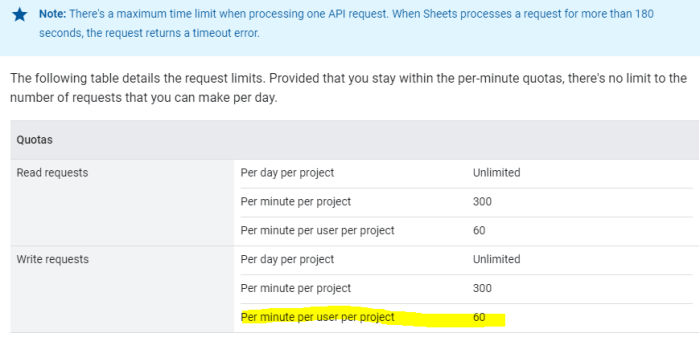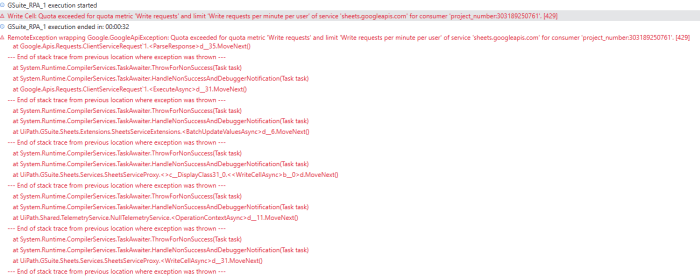Pupusa Festival: Dive into the vibrant heart of El Salvadorian culture, where the humble pupusa reigns supreme. This isn’t just a food festival; it’s a journey through history, tradition, and the intoxicating aromas of perfectly cooked masa. From the ancient origins of this iconic dish to the modern-day celebrations bursting with music, dance, and a dazzling array of pupusa fillings, we explore the complete experience of a Pupusa Festival.
Get ready to tantalize your taste buds and discover the magic behind this beloved culinary tradition.
This deep dive uncovers the rich history of Pupusa Festivals, tracing their evolution from small gatherings to large-scale events that draw thousands. We’ll explore the diverse regional variations in pupusa preparation, the essential ingredients, and the traditional Salvadoran beverages that perfectly complement these savory delights. We’ll also uncover the secrets behind crafting the perfect pupusa, offering recipes and tips to elevate your culinary game.
Prepare to be captivated by the sights, sounds, and smells of a true Pupusa Festival.
Pupusa Festival History and Origins

The vibrant Pupusa Festival, a celebration of El Salvador’s national dish, boasts a rich history intertwined with the country’s cultural identity. While pinpointing a precise origin date for organized Pupusa Festivals is difficult, their existence reflects the enduring popularity of pupusas throughout Salvadoran history. The festivals have evolved from small, community-based gatherings to large-scale events attracting both locals and tourists, showcasing the culinary heritage and national pride associated with this iconic food.
Cultural Significance of Pupusas in Salvadoran Identity
Pupusas are more than just food; they are a powerful symbol of Salvadoran national identity. Their presence in everyday life, from family meals to festive occasions, underscores their deep cultural significance. The act of making and sharing pupusas reinforces community bonds and family traditions, passing down recipes and techniques through generations. The diverse fillings represent regional variations and individual preferences, adding to the richness of this culinary tradition.
Pupusas are often associated with feelings of comfort, nostalgia, and belonging, representing a vital connection to Salvadoran heritage.
Traditional Pupusa Preparation Methods and Regional Variations
Traditional pupusa preparation involves a simple yet meticulous process. The masa, a dough made from nixtamalized corn, is carefully prepared, often using a hand-cranked grinder for a specific texture. The fillings, ranging from classic revueltas (cheese and pork) to more adventurous options like loroco (a type of vine flower), are then incorporated into the masa, which is expertly shaped by hand into small, thick discs.
These are cooked on a flat griddle called a comal, resulting in a slightly charred exterior and a soft, chewy interior. Regional variations primarily lie in the types of fillings used, reflecting the availability of local ingredients and regional culinary preferences. For example, pupusas in the eastern region might feature seafood fillings, while those in the western regions might incorporate more beans and vegetables.
Timeline of Significant Pupusa Festivals
Precise records of early Pupusa Festivals are scarce, as they were often smaller, localized events. However, the growth of tourism and increased national pride in Salvadoran cuisine has led to the rise of larger, more organized festivals in recent decades. While specific dates for early celebrations are undocumented, the increase in their popularity and formalization is easily observable in the last two decades.
Many smaller towns and cities now hold their own annual Pupusa Festivals, often incorporating other aspects of Salvadoran culture, such as music, dance, and artisan crafts. These events have become important for local economies, attracting visitors and boosting tourism revenue.
Comparison of Pupusa Festival Locations and Unique Features
| Location | Date (Approximate) | Unique Features | Notable Aspects |
|---|---|---|---|
| San Salvador | Various dates throughout the year | Large-scale event, diverse vendors, live music | Draws the largest crowds |
| Suchitoto | Typically during the summer months | Focus on artisanal pupusas, integration with local crafts | Offers a more intimate and traditional experience |
| Santa Ana | Usually in late spring | Emphasis on regional variations in pupusa fillings | Highlights the diversity of Salvadoran cuisine |
| La Libertad | Often coincides with other coastal celebrations | Combination of pupusas with seafood dishes | Appeals to both pupusa lovers and beachgoers |
Pupusa Festival Food and Drink

A Pupusa Festival isn’t just a celebration of Salvadoran culture; it’s a vibrant culinary experience. The heart of the festival beats with the delicious aroma of freshly made pupusas, complemented by a refreshing array of traditional Salvadoran drinks. Understanding the food and drink offerings is key to truly appreciating the festival’s atmosphere and cultural significance. This section dives into the recipes, fillings, beverages, and a sample menu to give you a complete picture of the gastronomic delights awaiting you.
Pupusa Recipes
The magic of a pupusa lies in its simplicity and the endless possibilities for customization. Here are three classic recipes to get you started. Remember, the key is to use fresh ingredients and don’t be afraid to experiment with your own flavor combinations.
Revueltas Pupusas
Ingredients: 2 cups masa harina, 1 1/2 cups warm water, 1 teaspoon salt, 1/2 cup cooked pork, 1/2 cup refried beans, 1/4 cup cheese (queso fresco or mozzarella).
Instructions: Combine masa harina, water, and salt. Knead until smooth. Divide dough into small balls. Flatten each ball into a disc. Place a spoonful of pork, beans, and cheese in the center.
Fold the dough over to seal, forming a half-moon shape. Cook on a lightly oiled griddle over medium heat for about 3-4 minutes per side, or until golden brown and the filling is heated through.
Queso Pupusas
Ingredients: 2 cups masa harina, 1 1/2 cups warm water, 1 teaspoon salt, 1 1/2 cups cheese (queso fresco recommended).
Instructions: Prepare the masa as in the Revueltas recipe. Divide the dough into small balls. Flatten each ball. Place a generous amount of cheese in the center. Fold and seal.
Cook on a lightly oiled griddle over medium heat for about 3-4 minutes per side, or until golden brown and the cheese is melted and gooey.
Lloronas Pupusas
Ingredients: 2 cups masa harina, 1 1/2 cups warm water, 1 teaspoon salt, 1 cup cooked chicharrón (pork rinds), 1/4 cup cheese (queso fresco or mozzarella).
Instructions: Prepare the masa as in the Revueltas recipe. Divide the dough into small balls. Flatten each ball. Place a mixture of chicharrón and cheese in the center. Fold and seal.
Cook on a lightly oiled griddle over medium heat for about 3-4 minutes per side, or until golden brown and the filling is heated through. The chicharrón adds a delightful crunch.
Pupusa Fillings and Toppings
The versatility of pupusas shines through in their diverse fillings and toppings. Beyond the classic cheese, pork, and beans, you’ll find a wide range of options at a Pupusa Festival. Common fillings include loroco (a vine flower), mushrooms, zucchini, spinach, and various types of meat, including chicken and beef. Popular toppings include curtido (a pickled cabbage slaw), salsa roja (red sauce), and crema fresca (a type of sour cream).
The combinations are virtually limitless, creating a unique culinary adventure with every bite.
Traditional Salvadoran Beverages
No Pupusa Festival is complete without the perfect accompaniment. Traditional Salvadoran beverages offer a refreshing contrast to the richness of the pupusas. Horchata, a creamy rice-based drink, is a popular choice, offering a subtly sweet and cooling experience. A refreshing option is also Fresco de Jamaica (Hibiscus Iced Tea), a vibrant and tart beverage with a beautiful reddish hue.
These drinks perfectly balance the flavors of the pupusas, enhancing the overall dining experience.
Pupusa Festival Menu
This sample menu showcases both classic and innovative pupusa options to cater to diverse palates.
| Pupusa Type | Filling | Topping |
|---|---|---|
| Revueltas | Pork, Beans, Cheese | Curtido, Salsa Roja |
| Queso | Cheese (Queso Fresco) | Crema Fresca |
| Lloronas | Chicharrón, Cheese | Curtido |
| Vegetarian | Loroco, Zucchini, Mushrooms | Salsa Verde |
| Spicy Chicken | Spicy Chicken, Cheese | Curtido, Crema Fresca, Jalapeños |
Common Pupusa Ingredients, Pupusa Festival
Preparing pupusas requires a variety of ingredients, categorized as follows:
A comprehensive understanding of the ingredients is essential for successful pupusa preparation. The quality of the ingredients directly impacts the final taste and texture.
- Grains: Masa Harina (corn flour)
- Meats: Pork, Chicken, Beef, Chicharrón (pork rinds)
- Cheeses: Queso Fresco, Mozzarella
- Vegetables: Loroco, Beans (refried or whole), Zucchini, Mushrooms, Spinach, Cabbage (for curtido)
- Spices and Condiments: Salt, Pepper, Spices (depending on the recipe), Salsa Roja, Salsa Verde, Curtido, Crema Fresca
The Pupusa Festival is more than just a feast; it’s a vibrant tapestry woven from centuries of tradition, community, and a shared love for this iconic Salvadoran dish. From the meticulous preparation of the masa to the lively atmosphere of the festival itself, every element contributes to a truly unforgettable experience. Whether you’re a seasoned pupusa aficionado or a curious newcomer, embracing the Pupusa Festival is an invitation to explore the heart of El Salvadorian culture, one delicious bite at a time.
So, gather your friends, family, and appetite – and get ready for a culinary adventure you won’t soon forget.